The Sutlej: The Longest Tributary of the Indus
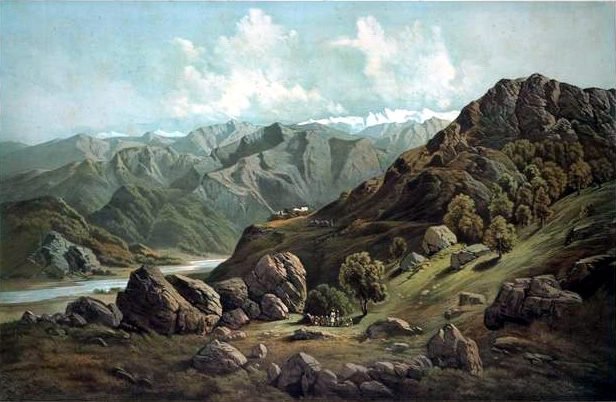
Sutlej is the longest tributary of the Indus River, and it is a very crucial part of forming the culture, economy, and history of North India and Pakistan. It streams over Himachal Pradesh, Punjab, and Pakistan, acting as a life-saver for civilizations throughout centuries. It has witnessed antiquated exchange courses, devout developments like Sikhism, and large-scale hydro ventures just as the Bhakra-Nangal Dam which changed the economy of that region.
Despite its economic centrality, the waterway faces serious natural challenges. Contamination, water sharing issues, and diminished streams due to climate alter imperil the river’s wellbeing.
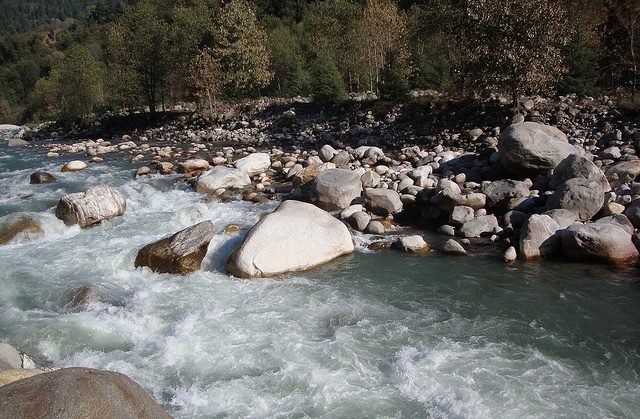
Origin of Sutlej
The Sutlej River originates near Mount Kailash in Tibet, at Rakas Lake, about 4,500 meters above sea level. It flows as one of the longest tributaries of the Indus River and travels about 1,450 kilometres through Tibet, India, and Pakistan. In the early part of its length, it runs west through the dry Tibetan region, called Langqen Zangbo. It passes through the Himalayas, entering Himachal Pradesh, India. Sutlej runs east of Kinnaur district in the Indian state of Himachal Pradesh, cutting a deep gorge before joining the plains of Punjab. In the course of its journey, it gathers several minor streams which include the Spiti River. On reaching Pakistan, it merges with the Indus River system and eventually falls into the Arabian Sea. The course of Sutlej is alluring to agriculture, generates hydropower, and irrigates; it is one of the most important pathways in the local economy.
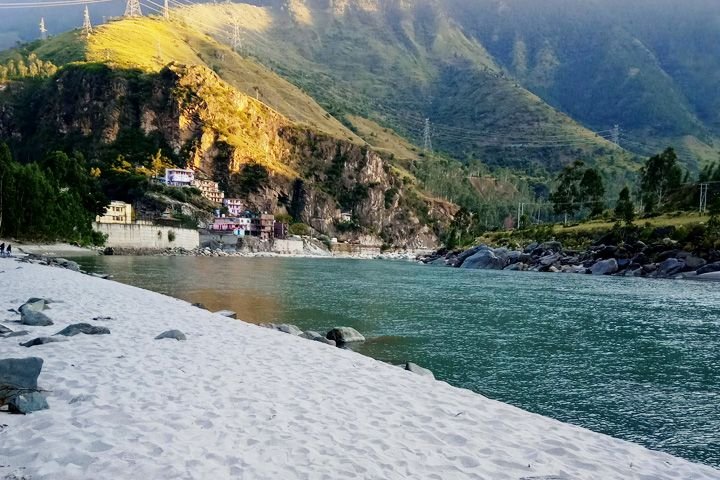
Mythology and Cultural Significance
Ancient Sanskrit literature refers to it as “Shatadru”. The river is the most sacred in Hindu mythology as it is merely contiguous with a holy site Mount Kailash and Lake Mansarovar, the fount itself. To those who travel to Mount Kailash, this is the river of spiritual purification, as the river is said to carry divine blessings from Lord Shiva. The Vedas also refer to the same as a mighty river that had fed ancient civilizations and acted as a corridor for trade routes.
Sutlej is also culturally and religiously of immense importance for Sikhs. This river goes through many historically important cities like Anandpur Sahib, where the tenth Sikh Guru, Guru Gobind Singh, instituted the Khalsa Panth in 1699. Millions of Sikh devotees visit the places along the Sutlej to worship the heritage left by the Gurus. In terms of history too, the river has been a geographical landmark and an important passage for strategists travelling or trade caravans.
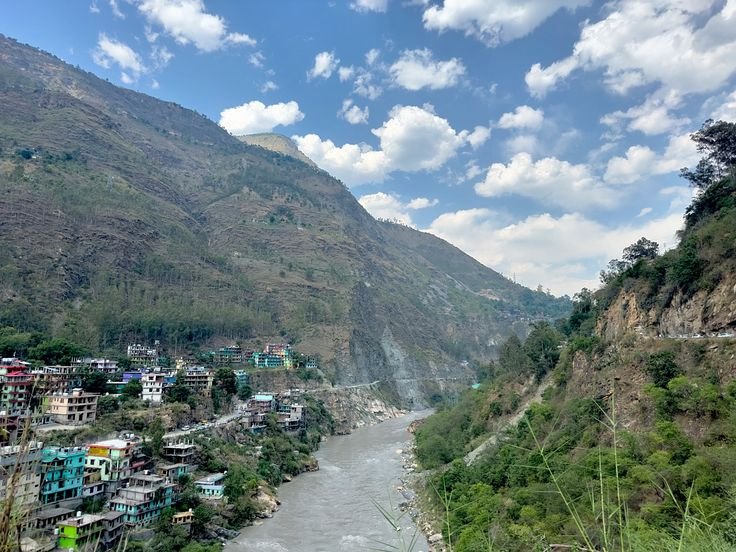
It is thought that Sutlej was indeed a component of the Saraswati-Indus River system in the distant past and would, therefore, have supplied the Indus Valley Civilization. Even when the river shifted course due to tectonic changes, this had a radical impact on the trade, culture, and economy of this region.
Historical Trade Routes and Religious Significance
The Sutlej River, as a trade route for centuries, has connected Central Asia, Tibet, and the Indian subcontinent. Lined by the river, traders transported trade items such as spices, wool, and silk to connect far-off areas with active markets. During the Mughal and British periods, the river played a vital role in transport and communication; cities like Lahore, Amritsar, and Ludhiana increased trade with each other.
River also witnessed the emergence of Sikhism and the town became the stronghold of many fortresses and other strongholds as well as places of worship. The city of Anandpur Sahib, near Sutlej, still is the holy capital of Sikhs. Thousands of devotees throng the city to pay homage to Sikh martial spirit and cultural heritage at events like Hola Mohalla every year.

The Bhakra-Nangal Dam Project and Its Impact
On the Sutlej River, the Bhakra-Nangal Dam is perhaps one of the most important hydro-engineering ventures in India. Completed shortly after India gained independence, this imposing structure includes the 225-meter-tall Bhakra Dam and the Nangal Dam downstream, acting as a reservoir and regulating water flow for irrigated agriculture and power generation purposes. Jawaharlal Nehru launched the Bhakra-Nangal project in 1963, and it has become a symbol of India’s development after independence. It has completely changed the region by irrigating millions of hectares of agricultural land in Punjab, Haryana, and Rajasthan. The dam water provides several crop cycles that enhance wheat, rice, and sugarcane cultivation in the productive plains of North India.
The Bhakra-Nangal project is one of the key hydropower-producing entities, with an installed capacity of 1,325 MW. Electricity generated has been used to power various industries, homes, and agricultural sectors in several states. Apart from energy, the project has created employment and avenues for the local people, thus adding value to the economies of the region. However, the dam has caused both environmental and social impacts. It led to the displacement of thousands of families, many of whom were inadequately resettled. The natural flow of the river was also affected, and aquatic ecosystems were affected, leading to a decrease in fish populations.

Environmental Challenges and Hydropower Potential
The Sutlej River faces several environmental issues that jeopardize its long-term sustainability. Industrial pollution and untreated sewage discharges have degraded the quality of its water. The growing use of fertilizers and pesticides in agriculture has led to chemical runoff that further degrades the river.
Climate change is another factor threatening the river. Changes in melting patterns of the Himalayas’ glaciers, where Sutlej originates, have brought about unstable flow patterns. Summer’s lower snow cover reserve has reduced the amount of water available and deprives the lower stretches of water. These patterns are quite challenging for the farmers who rely on the river to create irrigation conditions and multiple crop cycles.
Aside from environmental concerns, the illegal sand mining that has been conducted along this river poses a tremendous threat. Unchecked and unregulated activity can cause erosion along riverbanks, which might be disturbing to aquatic life in the process. In addition, the hydropower dams have increasingly altered the natural flow of this river, affected biodiversity as well as affected the fishing communities at its banks.

Hydropower Potential and Future Projects
Despite the challenges, the Sutlej River still has great hydropower potential. There are many new hydroelectric projects in various stages of planning and construction along the river, such as the Koldam Hydropower Project and the Nathpa Jhakri Dam, which is already in operation. As a whole, these projects are attempting to enhance India’s renewable energy production and reduce its reliance on fossil fuels. The balancing act between hydropower development and environmental sustainability, however, presents a significant challenge. Increasingly needed are responsible water management strategies that enable at least a minimum environmental flow in the river, supporting ecosystem health while addressing regional energy and water demands.
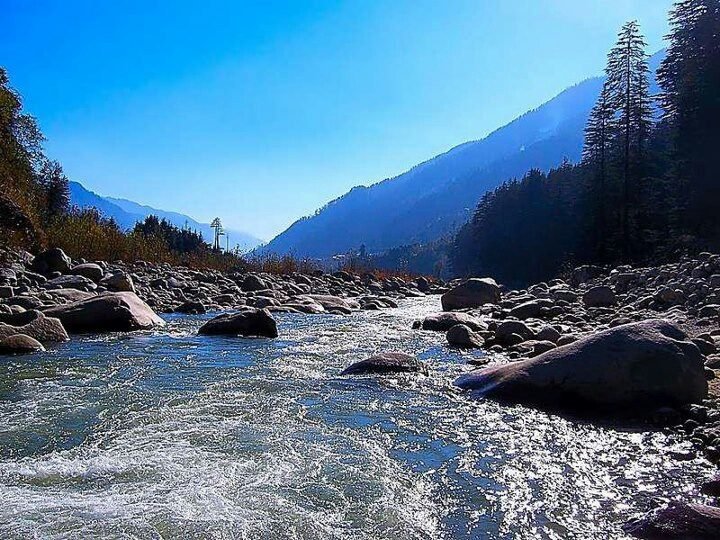
Conclusion
The river Sutlej is much more than the water; it is the lifeline of historical, cultural, and economic identity for the people of North India and Pakistan. A glimpse through its course from the Himalayas to the Indus River holds centuries of civilization, trade, and spiritual movements such as the rise of Sikhism. In modern times, the importance of Sutlej has only increased; hydropower projects such as Bhakra-Nangal have revolutionized the entire agricultural landscape of India. However, in the 21st century, there are several risks that Sutlej faces through pollution, climate change, and unsustainable development, and thus put its future in danger. The need of the hour to continue this role of river water is developing appropriate and sustainable water management techniques for rivers. With adequate planning, this river will still be used by the agriculture sector to produce food. The energy shall be produced through the rivers. In the process of preserving ecosystems for posterity. The heritage of Sutlej as a river of commerce, spirituality, and advancement must be preserved by keeping its waters clean and accessible for future generations. The policy measures, community engagement, or environmental protection-the mission of Sutlej must be a lifeline for the region.


